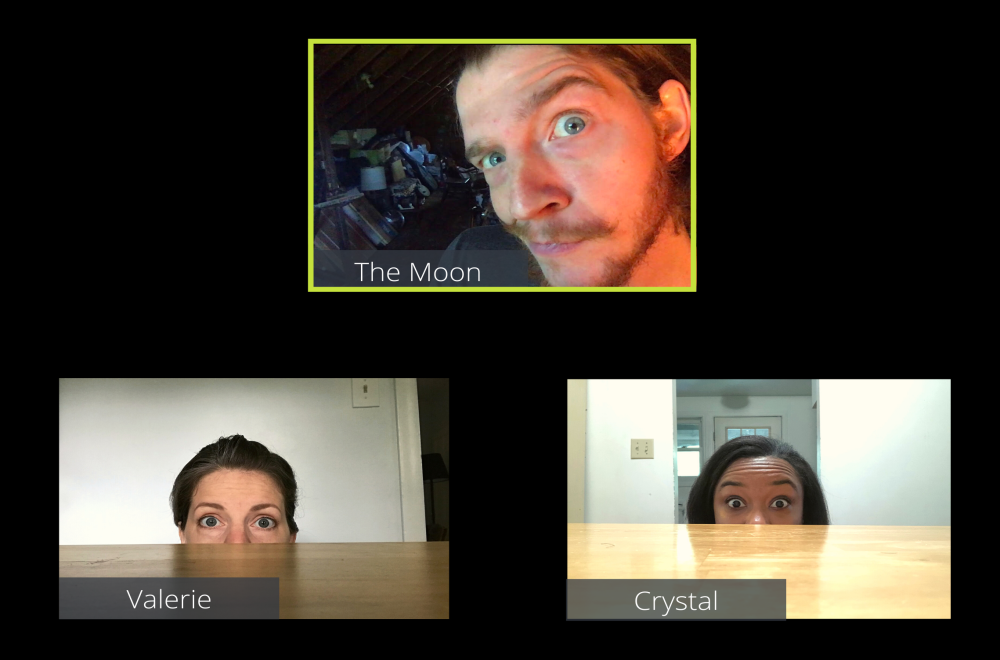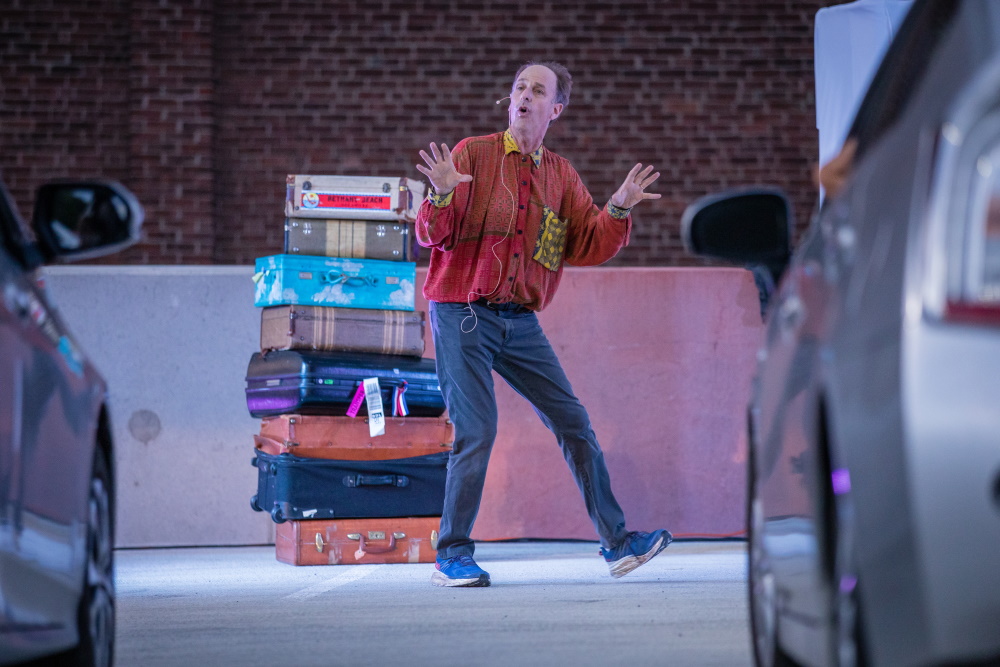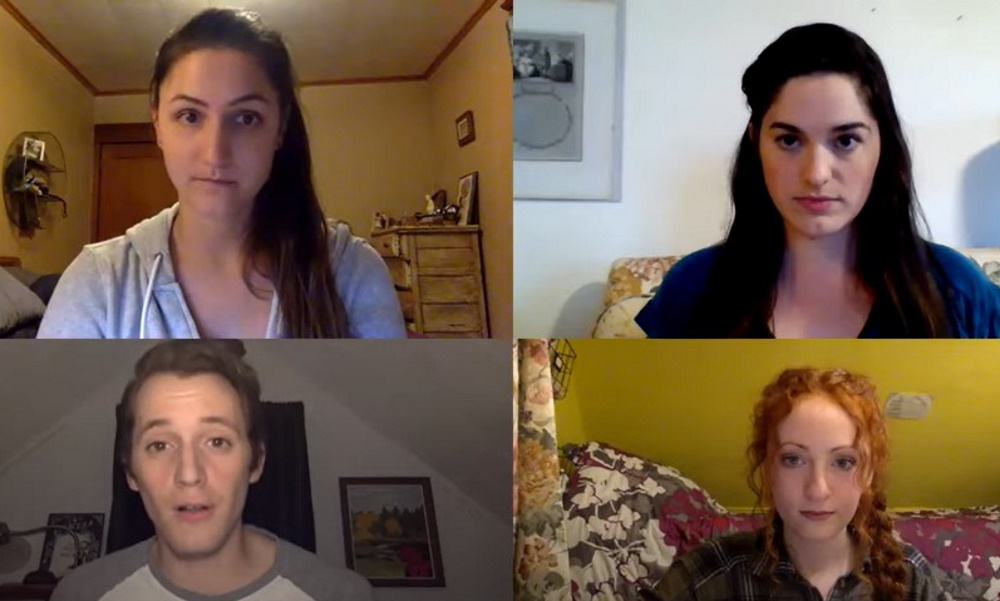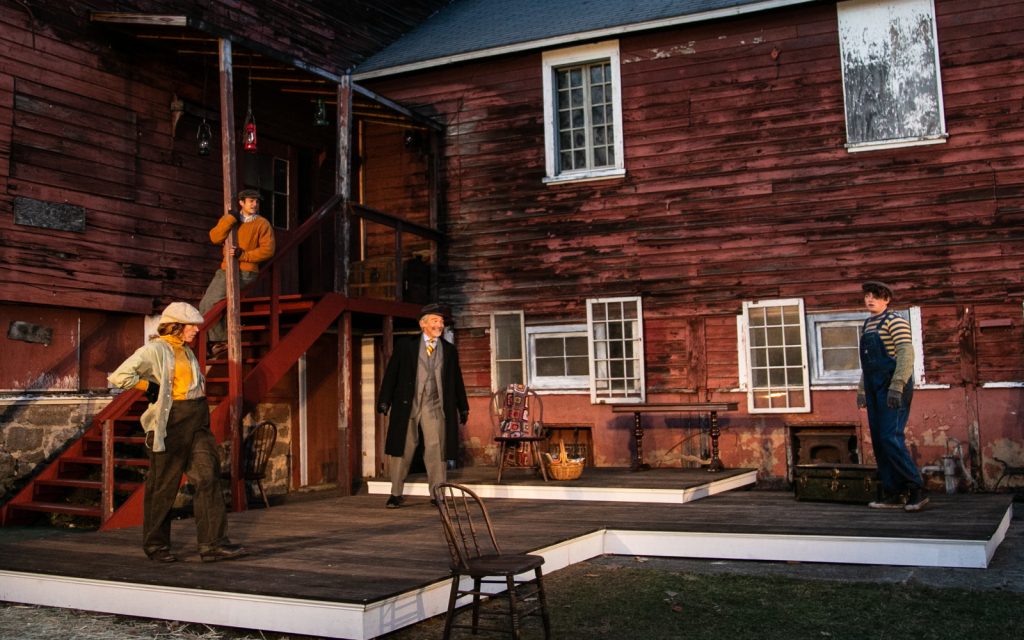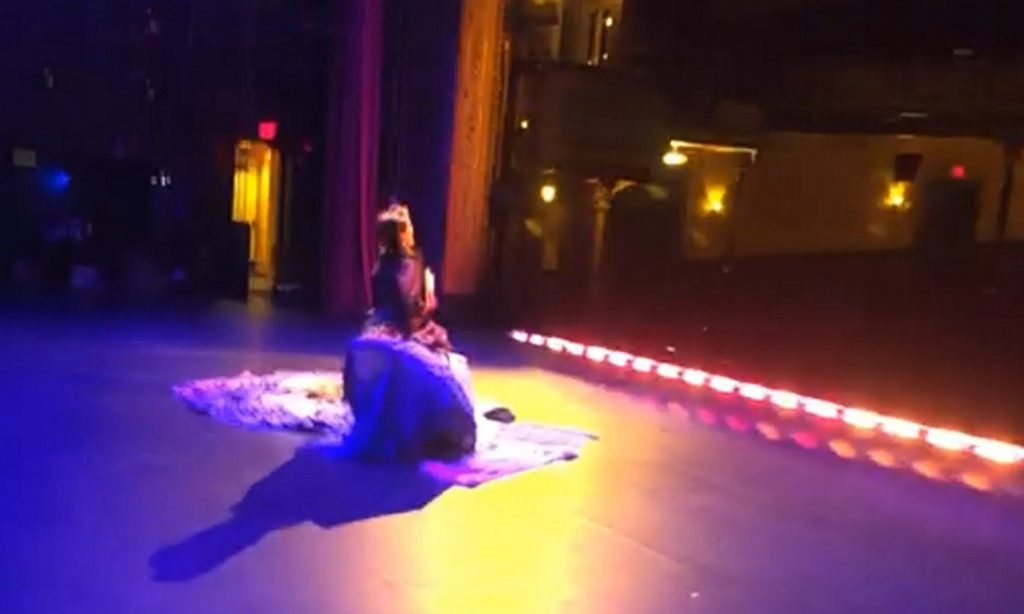Does theater, by definition, require an audience’s physical presence in a shared space with live actors? Is viewing the video record of a live performance different in a fundamental way from being there? What are we to make of the new online performances in this time of Covid, when theaters are shuttered and audiences get their theater fix on Zoom, where actors are performing in their bedrooms in front of virtual sets?
In other words, can we call it “theater” if we’re not in a theater? These questions have been jostling in my head all this dark year.
So far I’ve seen over 15 streamed productions and participated in a few more. Beyond that, there have been shows from US and international stages and even a couple of tentative live-in-person events in our region.
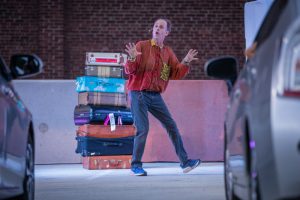 Three area theaters tiptoed into live performance with Covid-conscious productions. Jack Golden offered his whimsical one-man show Under the Stars to a drive-in audience on the roof of the Greenfield parking garage. In Pittsfield, Barrington Stage Company and the Berkshire Theatre Group performed in big open-sided tents with spectators widely separated from each other and from the stage.
Three area theaters tiptoed into live performance with Covid-conscious productions. Jack Golden offered his whimsical one-man show Under the Stars to a drive-in audience on the roof of the Greenfield parking garage. In Pittsfield, Barrington Stage Company and the Berkshire Theatre Group performed in big open-sided tents with spectators widely separated from each other and from the stage.  Currently at BTG, Holiday Memories, adapted from two Truman Capote stories, is holding forth on a temporary stage beside the company’s Unicorn Theatre. And short of reopening their houses, some companies are bringing actors together to film onstage productions, as Hartford’s TheaterWorks recently did with Ayad Akhtar’s The Who & the What.
Currently at BTG, Holiday Memories, adapted from two Truman Capote stories, is holding forth on a temporary stage beside the company’s Unicorn Theatre. And short of reopening their houses, some companies are bringing actors together to film onstage productions, as Hartford’s TheaterWorks recently did with Ayad Akhtar’s The Who & the What.
Perhaps the sole upside to the shutdown has been access to theatrical events we couldn’t otherwise have experienced at all, thanks to online streaming. These ranged from Hamilton, captured in performance with an audience and now available to the millions who couldn’t get tickets, to Aeschylus’s The Persians, performed in an empty Greek amphitheater but broadcast live to a global audience.
Theater without a stage
For me, the Zoomed plays that worked best were the ones that creatively exploited the medium itself – including its limitations – and shows expressly crafted for the platform. Here are some examples.
In Harley Erdman’s Lullaby of Zoomland, produced by the Valley’s Rise Up Productions in June, two lovers, sheltering on opposite sides of the continent, fall asleep while Zoom-chatting in their respective bedrooms and share the same nightmarish dream. In our own homes, we eavesdropped on their chatter and endearments, then followed them into the dreamscape, the attic aerie of a “lunatic” vaudevillian crooner, the Moon, stuffed with the random detritus of subconscious images.
 Pride@Prejudice, a 2010 play by Chester Theatre Company’s Daniel Elihu Kramer, was originally written as a dramatization of Jane Austen’s novel that’s interrupted by online questions and comments. In the variation I directed for Silverthorne Theater Company, five housebound students gathered in a Zoom room to discuss the classic and act it out. Recently WAM Theatre staged Larissa FastHorse’s antic satire The Thanksgiving Play as a Zoomed rehearsal.
Pride@Prejudice, a 2010 play by Chester Theatre Company’s Daniel Elihu Kramer, was originally written as a dramatization of Jane Austen’s novel that’s interrupted by online questions and comments. In the variation I directed for Silverthorne Theater Company, five housebound students gathered in a Zoom room to discuss the classic and act it out. Recently WAM Theatre staged Larissa FastHorse’s antic satire The Thanksgiving Play as a Zoomed rehearsal.
As Zoom fatigue set in over the summer and into fall, I was drawn to the ones that minimized or disguised the boxy interface. One-person shows, for instance, avoided the Hollywood Squares look, creating a more intimate one-on-one feel. K&E Theater Group’s Halloween-themed Whispers from the Wings went that one better, presenting a month-long series of spooky stories read round-robin-style by trios of performers, each in their own shadowy candle-lit room.
 Some companies brought sophisticated technology to Zoom-based productions. WAM’s ROE, about the battle over abortion rights, scattered and stacked multiple tiles against expressive backgrounds and created trompe-l’oeils that seemed to put two characters together in the same room. TheaterWorks used digital manipulation to take us into the Russian Troll Farm that meddled in the 2016 election.
Some companies brought sophisticated technology to Zoom-based productions. WAM’s ROE, about the battle over abortion rights, scattered and stacked multiple tiles against expressive backgrounds and created trompe-l’oeils that seemed to put two characters together in the same room. TheaterWorks used digital manipulation to take us into the Russian Troll Farm that meddled in the 2016 election.
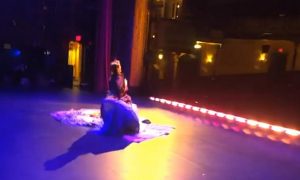 While most online theater is prerecorded, live broadcasts add an air of immediacy that brings us one step closer to the theatrical experience. And Eggtooth Productions’ Stagehand brought us right into it, as we virtually accompanied a technician prowling the backstage of an old theater, leading us into real-time encounters with old-time actors preparing for a rehearsal.
While most online theater is prerecorded, live broadcasts add an air of immediacy that brings us one step closer to the theatrical experience. And Eggtooth Productions’ Stagehand brought us right into it, as we virtually accompanied a technician prowling the backstage of an old theater, leading us into real-time encounters with old-time actors preparing for a rehearsal.
So – is digital theater theater? Well, yes and no. There’s nothing like the smell of the greasepaint and the roar of the crowd. But…
Despite the drawbacks and frustrations of the medium for those on both sides of the screen, in the proliferation of virtual drama during this plague season, I’ve found cause for hope, even wonder. I’ve seen theater’s endurance in artists’ persistent urge to create and communicate; in their eagerness to experiment and expand the form; and in audiences’ insistent need to participate, however conditionally, in the theatrical exchange.
Theaters and individual artists have been hard-hit by the pandemic, as first income and then government assistance has dried up. Many of the onscreen productions we’re now enjoying come to us free, or for a good-will donation, or with greatly reduced ticket prices. The old normal, the shared space, isn’t coming back right away. So here’s an early new-year’s resolution: Think about the dollars you’ve spent in the theater in better days, and if you can, put some of that into help for the present and hope for the future.
Photo credits:
Under the Stars, Matthew Cavanaugh
Holiday Memories, Emma Rothenberg-Ware
Others courtesy of the theaters
This post is also in this week’s special edition of the Valley Advocate, out now. While the paper remains on indefinite hiatus, Stagestruck will continue posting occasionally. Write me at Stagestruck@crocker.com if you’d like to receive notices when new pieces appear.
Note: The weekly Pioneer Valley Theatre News has comprehensive listings of what’s on and coming up in the Valley. You can check it out and subscribe (free) here.
The Stagestruck archive is at valleyadvocate.com/author/chris-rohmann
If you’d like to be notified of future posts, email Stagestruck@crocker.com

